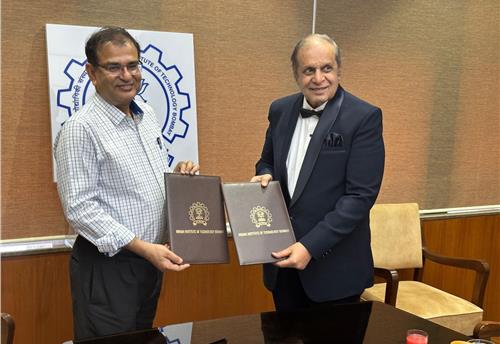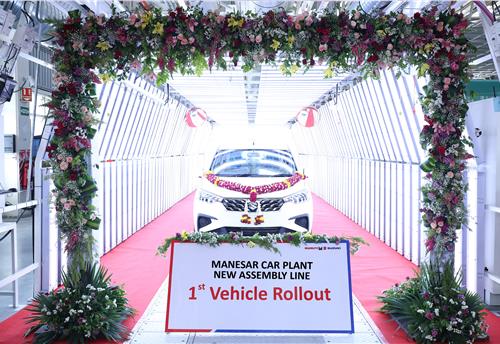Abysmally low usage of rear seatbelts in India: Survey
A SaveLife Foundation and Nissan Motor India survey finds that only 7 percent of motorists strap on the rear seatbelts regularly. While 98% of respondents in Mumbai, Delhi, Jaipur, Kolkata, Lucknow and Bangalore do not use rear seatbelts, no motorist in Lucknow, Jaipur and Kolkata uses the life-saver.
While 2019 is going to be the year when vehicle safety takes a leap in India, what with mandatory norms set to make Indian cars and two-wheelers safer, what remains worrying is the systems the abysmal percentage of motorists deploying safety measures, starting with the basic life-saving measure such as seatbelts in cars and helmets for two-wheeler riders. Not surprisingly, India continues to top the road crash fatality chart in the world. According to the latest official data available, road accidents in India claimed 405 lives, injured 1,290 each day in 2017.
Offering a detailed look into usage patterns of seatbelts and helmets in India is a recent national survey conducted for SaveLIFE Foundation by Marketing and Development Research Associates (MDRA) in association with Nissan Motor India. The study, which was carried out in 11 cities, and collected responses from over 6,300 participants, including passenger vehicle, two-wheeler, public transport and school cabs/vans users, focusses on two crucial aspects – the status of use of rear seatbelts and the safety of children during commute.
The study found that although India has a law on the seatbelt usage, its implementation remains a challenge due to lack of awareness and weak enforcement of the law. In 2017, 26,896 people died due to non-usage of seatbelts in India, an exponential increase of over 377 percent YoY. The year also saw around 16,876 passengers killed, and 61,942 passengers injured due to non-use of seatbelts.
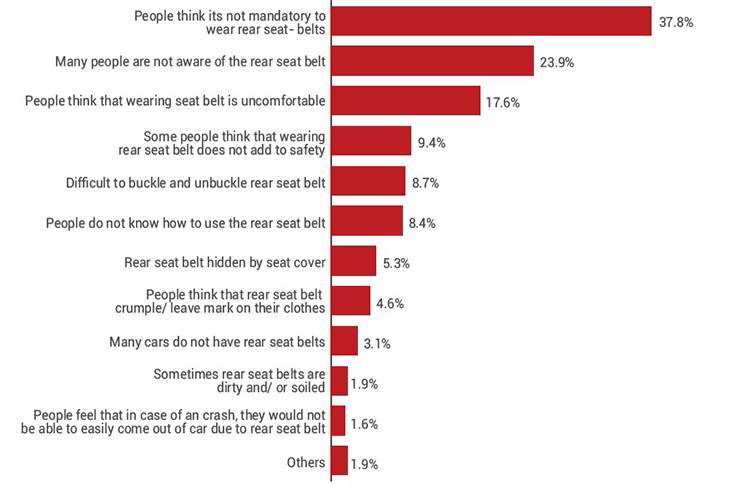
Major reasons for non-use of rear seat belts
According to WHO (World Health Organisation), use of rear seatbelt reduces the probability of being killed by 25 percent and injuries by 75 percent. When examining the use of rear seatbelts in India, the study finds that while a majority of the people surveyed are aware of the presence of rear seatbelts in their vehicles, only a portion of the population actually strap it on. While there is a law mandating the use of rear seatbelts for all vehicles, awareness, and enforcement around it is negligible. A key finding is that only 10 percent school buses have seatbelts for children.
The survey highlights there is a pressing need for improving the status of child road safety in India. In 2017, 25 children below the age of 18 were killed every day on Indian roads. At present, there is no law to protect children on road.
Very low level of rear seatbelt usage despite high awareness
A state-wise look at the data shows that the total number of drivers killed due to not deploying the seatbelt is 10,020 in 2017, with Tamil Nadu witnessing the highest at 1,666 deaths, followed by Uttar Pradesh (1,464 deaths), Karnataka (1,078 deaths), Maharashtra (828 deaths) and West Bengal (824 deaths).
The total number of passengers killed for not wearing a seatbelt was 16,876, with Karnataka seeing the highest number of passenger deaths at 2,957, followed by Tamil Nadu (1,831 deaths), Rajasthan (1,482 deaths), Uttar Pradesh (1,433) and Madhya Pradesh (1,368 deaths).

Usage of rear seat belts by 4ws
A shocking finding is that these fatalities have occurred despite a high level of awareness of the life-saving ability of a seatbelt. The survey finds that seven out of 10 direct users (drivers or passengers) confirmed the availability of rear seatbelts in their vehicle or in the vehicle they usually travelled in. The remaining 30 percent claimed either the unavailability or ignorance of its availability. The most number of respondents who confirmed the availability of rear seatbelt in four-wheelers are residents of Chennai, Guwahati, Mumbai and Bangalore. In the cities of Patna, Kolkata and Delhi, most respondents said either “No” or “Not sure” about its availability. In Patna, less than one-third of the respondents surveyed said their four-wheelers were equipped with rear seatbelts.
More men (76%) than women (59%) confirmed the availability of rear seatbelts in four-wheelers. And more than 80 percent drivers surveyed confirmed the availability of rear seatbelts in their car compared to passengers, at 58 percent.
As many as 67 percent admitted they have never used it, while 26 percent claimed they wore it sometimes and the rest said they used it all the time if sitting in the rear cabin of the vehicle. So, while 71 percent four-wheeler users had confirmed the availability of rear seatbelt in their vehicles, only 7 percent use it regularly.
To add to this, as per a road safety expert interviewed in the survey, less than 1 percent people use rear seatbelts in India. The maximum cases of non-usage of rear seatbelts was found in Guwahati, where 77 percent of the respondents acknowledged never having used a rear seatbelt in their four-wheelers, closely followed by Kochi and Patna at 73 percent.
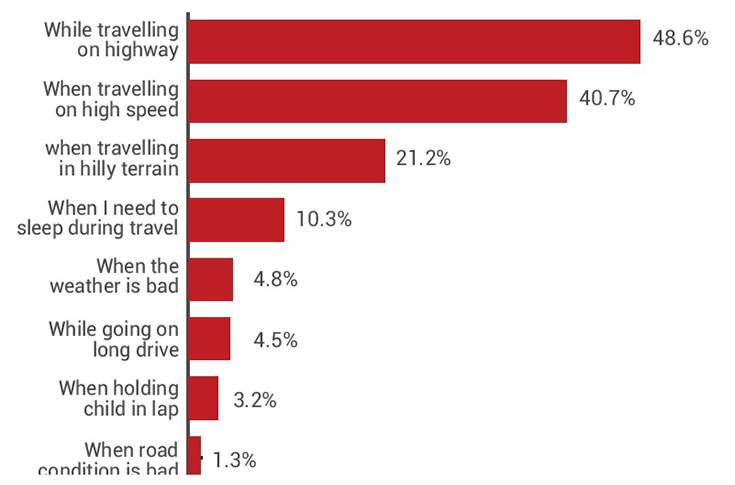
Common reasons for using rear seat belts
Interestingly, higher income groups showed a greater tendency towards using a rear seatbelt. A similar tendency was exhibited by those with higher educational level. Taxi drivers were among the top non-users of rear seatbelts and 72 percent of those surveyed said they have never seen it being used by their rear-seat occupants.
Among the top three reasons for non-usage of rear seatbelt includes — people think it is not mandatory (37.8%), no awareness of rear seatbelt (23.9%) and wearing seatbelt is uncomfortable (17.6%).
The survey shows that overall only 1.8 percent of passengers sitting in the rear seat were wearing seatbelts. The highest proportion of passengers who wore rear seatbelts were in Delhi (4 percent) followed by Mumbai (2.4 percent), Bangalore (2.1 percent), while none of the passengers in Jaipur, Kolkata and Lucknow were found to be wearing rear seatbelts.
Rear seatbelt usage in children
It is no brainer that seatbelts and child restraints are extremely effective at saving the lives of car occupants in the event of a crash. The non-usage of seatbelts and child restraints more than doubles the risk of serious and fatal injury.
The survey explored attitudes and behaviour of parents while commuting with children in four-wheelers. The parents were asked which seat their child generally used while travelling – nearly 57 percent parents said their children sat in the rear seat, while 37 percent said they sat in the front seat. Around six percent of respondents said their children do not sit on any particular seat. Mostly in metro cities, six out of 10 respondents said their children sat in the rear seats, except in Chennai. In the smaller cities also, most respondents said that their children sat in rear-seats, except in Panaji and Guwahati.

Ways to make people wear seatbelts
Among those respondents who said their children mostly sat in the rear seat, 77 percent said their children sat there without wearing a seatbelt, while 14.2 percent said they sat in the lap of a rear-seat passenger. Only 8.4 percent said their children sat in the rear seat while wearing a seatbelt.
The survey found that most respondents (90.6 percent) claimed their children sat in a school bus in the rear seat without wearing a seatbelt.
Helmet usage among children
While every state in India has mandated the usage of helmets for two-wheeler users in the country, the compulsion for helmet usage among pillion riders is not enforced as much as needed. Interestingly, the majority of the respondents (93 percent), nationwide, answered that wearing one would decrease the chances of injury or death, while five percent felt it would have no impact.
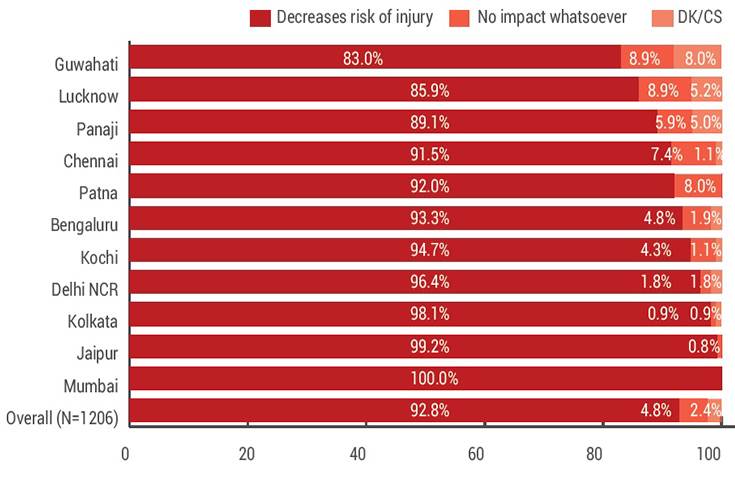
Relation between road crash and usage of helmets
Despite most people acknowledging that helmets play an important role in saving children from injury or death during road crashes, eight out of 10 respondents nationwide said that they do not own a child helmet. Lucknow (99.3 percent) and Kochi (98.9 percent) had the highest percentage of people who do not own a child helmet. Most people surveyed in Kolkata (80 percent) said they owned a child helmet, followed by Bangalore (31 percent), and Guwahati (34 percent). The survey also found that the higher the monthly household income of respondents, the more likely they were to own a child helmet.
Recommendations
SaveLIFE Foundation says it is evident from the study that usage and awareness regarding rear seatbelts is quite low in India. Child road safety is also a major concern due to lack of effective strategies. In order to ensure safety amongst road users including children, it recommends that to improve rear seatbelt usage there is a need to create awareness about the importance of using them (rear seatbelt), bring in effective legislation and ensure strict enforcement by the authorities.
When it comes to child road safety it suggests demarcating of safe play areas for children/child zones; a non-bailable offence and severe fines for violation of speed limit in these zones; school buses should be designated as a special class of vehicle and their regulation be clearly defined under the ambit of law; the Supreme Court guidelines for school buses should be brought into the Central Motor Vehicle Rules and notified and schools violating the said statutes should be heavily fined including provisions for cancellation of their registration and licenses; child helmets should be made mandatory for children above the age of 4; ensuring child safety equipment in all vehicles where relevant – child helmets, child restraints, child seatbelts and strict penalty system on violation of child safety laws among others.
While it may be a challenge to implement all of these suggestions, ensuring basic safety practices such as seatbelt strapping and helmet for all two-wheeler riders can reduce the road accident severity and fatality rate in the country.
RELATED ARTICLES
Bosch hydrogen engine tech-powered truck to be on Indian roads this year
The global supplier of technology and services is betting big on both electromobility and hydrogen. While announcing the...
IIT Bombay inaugurates Arun Firodia Research Floor
IIT Bombay, one of India’s top technical and research institutions, honours Kinetic Group chairman Dr Arun Firodia, one ...
Maruti Suzuki expands capacity at Manesar plant by additional 100,000 units
New assembly line at Plant A expands total manufacturing capacity at the Manesar plants to 900,000 units per annum. Alon...





 14 Jan 2019
14 Jan 2019
 15060 Views
15060 Views



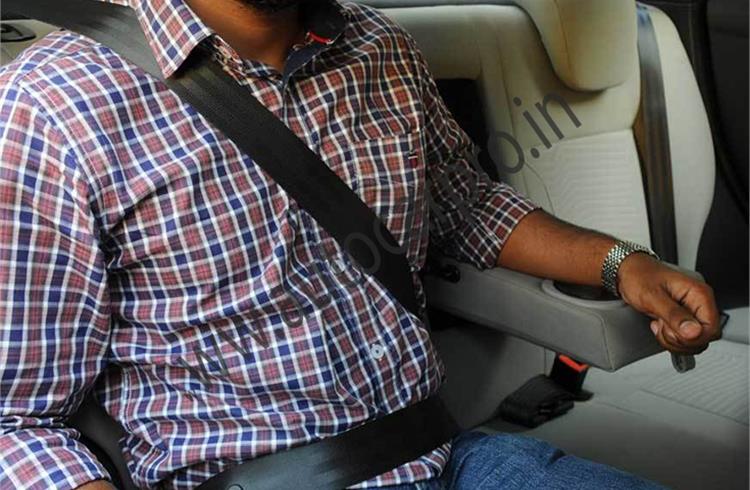
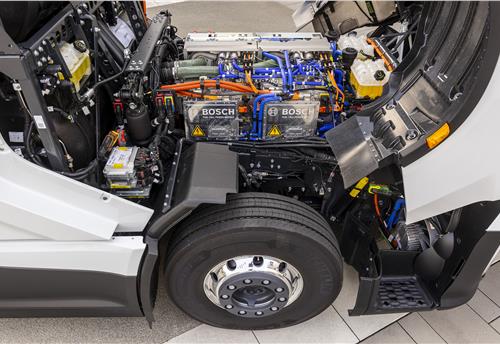
 Autocar Pro News Desk
Autocar Pro News Desk

